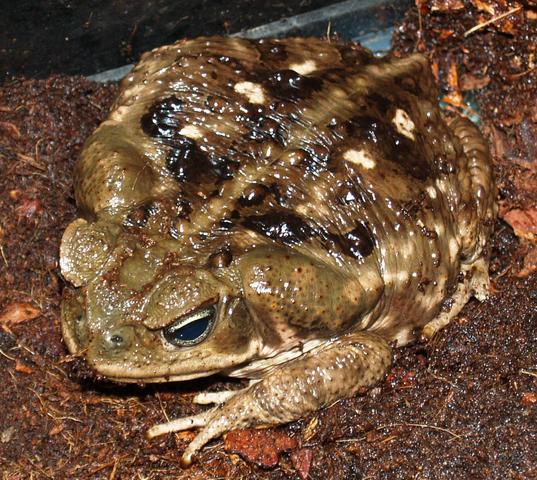| The
cane toads were initially introduced to reduce sugar cane beetles and
insects but their success seems marginal. Today, the cane toad is
generally considered a pest wherever it was introduced either
intentionally or accidentally and now belongs to the 100 worse invasive
species. In the wild, these toads are opportunistic carnivores that non
selectively consume not only invertebrates but other vertebrates (frogs
and snakes) and plant matter. They can reproduce any time of the | year if it is warm enough and lay
thousands
of eggs. In Australia, native amphibians, cats, and several snakes have
been adversely affected since these animals have no natural immunity to
bufotoxin. Hawai'i has no known native land amphibians with which the
giant toad may displace. However, these toads may have contributed to the endangerment of native insects and birds in Hawaii. Because Hawai'i is not their native habitat, the cane toad should be controlled in Hawai'i.
|

